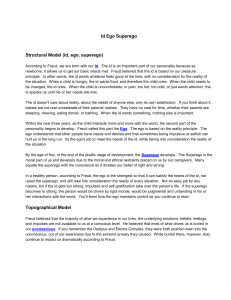139 chapter 3 questions
advertisement
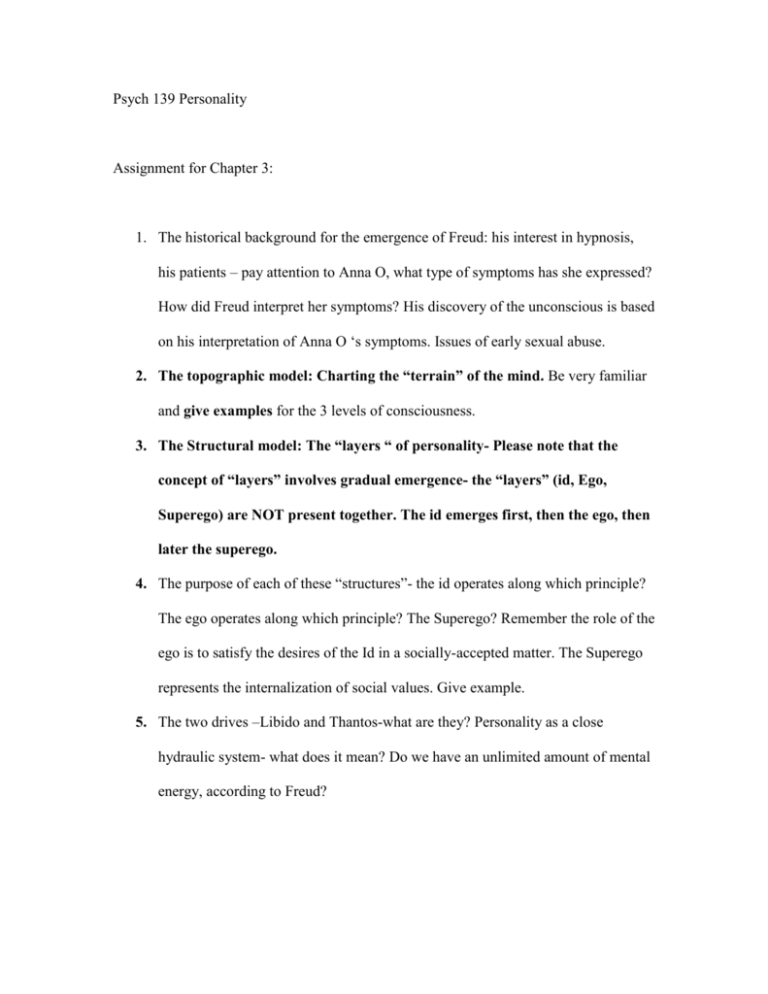
Psych 139 Personality Assignment for Chapter 3: 1. The historical background for the emergence of Freud: his interest in hypnosis, his patients – pay attention to Anna O, what type of symptoms has she expressed? How did Freud interpret her symptoms? His discovery of the unconscious is based on his interpretation of Anna O ‘s symptoms. Issues of early sexual abuse. 2. The topographic model: Charting the “terrain” of the mind. Be very familiar and give examples for the 3 levels of consciousness. 3. The Structural model: The “layers “ of personality- Please note that the concept of “layers” involves gradual emergence- the “layers” (id, Ego, Superego) are NOT present together. The id emerges first, then the ego, then later the superego. 4. The purpose of each of these “structures”- the id operates along which principle? The ego operates along which principle? The Superego? Remember the role of the ego is to satisfy the desires of the Id in a socially-accepted matter. The Superego represents the internalization of social values. Give example. 5. The two drives –Libido and Thantos-what are they? Personality as a close hydraulic system- what does it mean? Do we have an unlimited amount of mental energy, according to Freud? 6. Be very familiar with all the defense mechanisms and give examples of each. Which one of the defense mechanism was regarded by Freud as the most adaptive (Healthy?) 7. Be familiar with the 5 psychosexual stages of development. What happens in each stage? The concept of FIXATION- what does it mean? 8. Note the important events, according to Freud, in the Phallic stage (ages 35).The boy and the Oedipus Complex and Castration Anxiety, the girl and the Electra Complex and Penis Envy. 9. How do we get into the unconscious, according to freud? Be familiar with each of the avenues suggesting by him. Note the interpretation of dreams- the manifest and latent content- be sure to understand these two ideas. 10. Psychoanalysis: What is its main goal? (Hint: to bring unconscious material into awareness). What are the strategies_ be familiar with the meaning of each. 11. Projective tests as a means to get into the unconscious (according to Freud). What are they? Note the Ambiguity Hypothesis. 12. B every familiar with strengths and criticisms of Freud’s theory. The main weakness- the concepts do not lend themselves to empirical investigation- for example, how do you measure the “unconscious”.

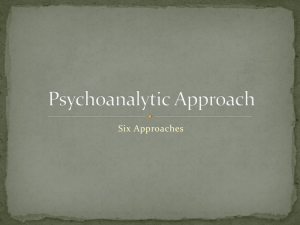

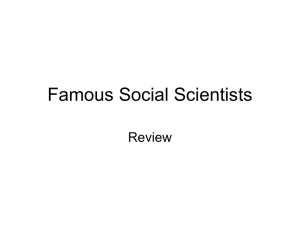
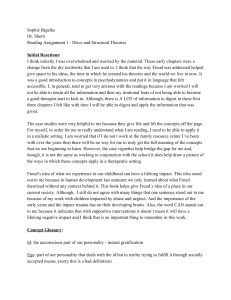

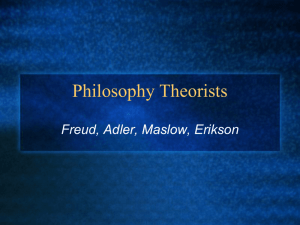
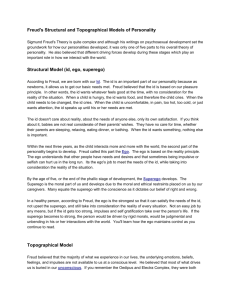

![Freud[1]](http://s3.studylib.net/store/data/009188810_1-b4da58acda3597f24583464fef8dd596-300x300.png)
